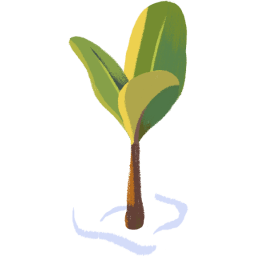po·lyn·ya /pälənˈyä/ noun a stretch of open water surrounded by ice, especially in Arctic and Antarctic seas.
The Great Southern Barrier
At the southernmost point of the Ross Sea, Antarctica, a wall of floating ice cliffs towers 50 meters above the sea and plunges 450 meters below the water. The immensity of this ice wall defies description. The Ross Ice Shelf floats over the entire southern third of the Ross Sea. Dozens of glaciers — frozen rivers from the East and West Antarctic Ice Sheets — spill down into the Ross Sea, converging into a massive flood of ice.
The line of cliffs is 800 kilometers long and advances up to three meters a day, occasionally shedding an iceberg the size of Luxembourg. The Ross Ice Shelf is up to a kilometer thick, and the size of France. But numbers cannot possibly do it justice. The shelf exerts a profound influence on both the Ross Sea and the entire global ocean, in large part because it is the source of the Ross Sea Polynya.
Formation of the Ross Sea polynya
Unhindered by obstacles, cold, dry winds race down from the high Antarctic plateaus, picking up speed along the vast, flat shelf before shooting off the cliffs at 200 kilometers per hour and racing across the Ross Sea. These katabatic winds push the blanket of sea ice away from the edge of the shelf, creating a large pool of open water — the polynya — even when the rest of the sea is covered in ice. The ocean freezes again within the polynya, and eventually more winds push this ice out to sea as well.
In this way, the Ross Ice Shelf is actually a sea ice factory, pumping out an annual load of nearly 200,000 square kilometers of two-meter-thick sea ice into the Ross Sea.
And this is still just the beginning of the story.
Polynyas and the global ocean
When seawater freezes into sea ice in the polynya, it loses most of its salt to the water column below. This extremely cold, salty water is the densest seawater on Earth, so it sinks, floods off the Antarctic continental shelf, and spreads northward over the ocean floor. As this Antarctic Bottom Water sinks, it helps push the deep ocean water to the polynya's surface, and the entire Southern Ocean is turned upside down.
As the ocean turns over, the Antarctic Bottom Water brings back to the surface the sunken nutrients that it absorbed during its long journey south. This water is depleted of dissolved gases, and absorbs heat, oxygen and carbon dioxide as it spreads away from the continent, driven north by the wind and the Coriolis effect, a product of the physics of spinning fluids. When it sinks again, roughly 1500 miles north, it takes the dissolved gases and heat with it into the interior of the ocean, buffering the effects of climate change and providing oxygen to ocean life. The overturning of the Southern Ocean is linked to all major global oceanic and atmospheric patterns, and it all starts in the polynyas.
The Ross Sea polynya and ecosystem
After nearly five months of winter’s continual night, the first rays of sunlight reach the surface of the ocean in the polynya, initiating the Ross Sea's spring bloom. The upwelling of nutrients gives rise to a floating phytoplankton forest as the sun rises in the spring, a bloom so large and dense that it can be seen from space.
The biological richness of the Ross Sea Polynya works its way up the oceanic food chain, from phytoplankton to kril, to fish, penguins, seals, and whales. While polynyas all around the continent are hotspots of Antarctic life, the Ross Sea supports the largest populations around the entire Antarctic continent. Covering only 2% of the Southern Ocean, the Ross Sea is home to a third of all Adélie penguins and more than a quarter of all emperor penguins and Weddell seals.
Protection now and into the future
The Commission for the Conservation of Antarctic Living Resources (CCAMLR), made up of 26 countries and the EU, unanimously adopted the Ross Sea Marine Protected Area (MPA) in 2016. It's the largest marine protected area in the world, and the first large-scale international MPA. The MPA will be in effect until 2052, at which time it will have to be adopted again by consensus.
And so the story continues. The Ross Sea Polynya is crucial for Antarctic biology today, and projections using state-of-the-art Earth system models show that it will remain a globally important ecological hotspot well into the future, especially in an increasingly warming world. It's up to us to ensure this vital ecosystem's continued protection.






















